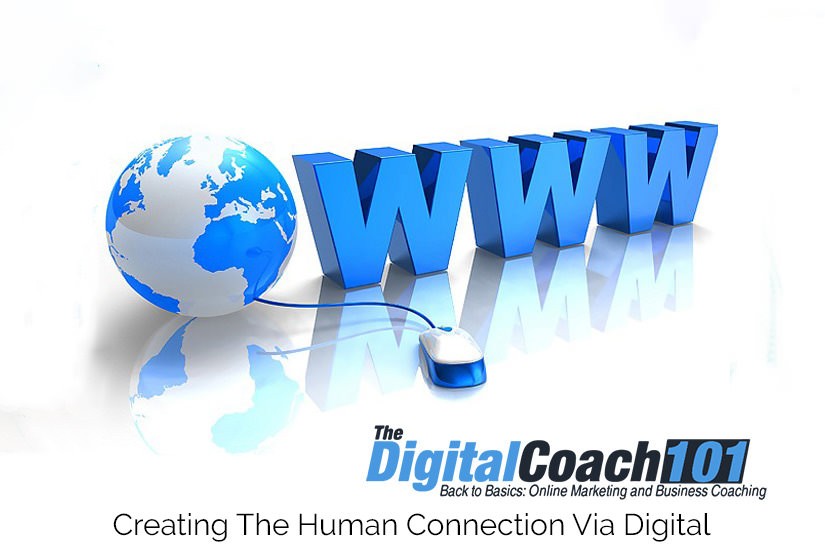Here’s Why Your Business Needs A Professional Website
Think about your employees for a minute. Well, to be more specific, think about your very best employee. You know the one I mean. That wonderful person who seems to walk into the office every morning in movie-esque slow motion. The one who draws everyone’s attention when they glide across the floor to the coffee machine or water cooler. And of course, the one who makes record sales month after month, or who produces mind-blowing reports that impress even the Big Boss whom everyone calls Darth Vader behind his back.
I know you try to be a good parent and refuse to admit you have a favourite, but the truth is, you do. You can’t help it. Your best employee gets the best perks, the biggest office, the nicest car and the first choice of muffins at teatime. When they go on leave, you find yourself staring wistfully out of the window at their empty parking space. (It’s the one under the shady tree and closest to the front door, obvs). You mark off their leave days on your calendar one by one and start getting really excited when there are only two more days until their return to the office.
And yet, despite all this, it doesn’t change one hard, cold fact:
This employee – yes, even this employee – isn’t as valuable to your company as your website. I hear you gasping and spluttering in disbelief, but, my dear reader, it is true.
I know – your best and favourite employee has a future so bright they have to wear shades. But being that awesome comes at a price. You have to pay them a salary, commission, car allowance and medical aid. They need normal leave, sick leave and the odd “personal day.” They only work regular office hours and take weekends off.
Your website needs and does none of these things.
Why Is A Professional Website So Important?
Your website is like the ultimate salesperson. It works 24/7/365. No time off to attend a child’s school play or watch a soccer match. No man flu. And, best of all, no need to pay it a salary, bonuses, perks or commissions. Your company’s professional website is like a thousand best employees all rolled into one. It can reach more people than your very best salesperson could ever hope to – and in a fraction of the time.
A well-designed, well-optimised website means anyone can find your business in a matter of seconds with the simple click of a mouse. People that your best employee would never think about targeting could be looking at your site right now. This minute! While you’re reading this, someone somewhere could be reading the great content you’ve got on your own site. And when your best employee is tucked up safely in bed getting eight hours of beauty sleep, your website is still working. Tirelessly making you money without ever even taking a comfort break.
To Go Global, Think Local
Your website becomes even more important when you decide to expand your business into the international arena. Competing successfully in any market relies on effectively communicating with your audience. What better way to do this on a global scale than with your website?
To truly do this effectively, however, takes time and, yes, a little money. But it is one hundred percent worth it. Real estate agents tell you the three most important things to consider when buying a house are location, location and location. In the digital marketing world, the three most important things to remember when customising your professional website for a global audience are localisation, localisation, localisation.
Here are a few key questions to ask to help you structure your localisation strategy:
Language and Location
How many languages does your website need to support? How many locations do you want to reach?
Navigation
Regardless of the language they speak, or where they live, can people easily navigate your site? Can visitors quickly and easily find content that is relevant to them?
Architecture
How locally flexible is your website? Does it look and feel the same across all languages? Is your branding recognisable, and does it support mobile users?
Social Relevance
How relevant is your message to international cultures? Do you have local-language social networks, and are they well supported and promoted?
Tell Me More About Website Localisation
The Globalization and Localization Association (GALA) defines localisation as “the process of adapting a product or content to a specific locale or market.” The ultimate aim of localisation is to make your website look and feel as though it’s been created especially for a specific target market – no matter what their language, culture, or location.
Remember that over half the world’s Internet population speaks a language other than English. A localised website is, therefore, well worth the investment for your company.
While translation is undoubtedly one of the most important parts of effectively localising your site, there is more to it than that. To be relevant to your market, you have to adapt your entire content. In addition, take cultural and religious influences into account to avoid offence or confusion.
GALA suggests also taking the following steps when localising your website:
- Adapting graphics to international markets
- Modifying content to meet the tastes and consumption habits of global markets
- Adapting design and layout to properly display translated text (some languages might be longer or shorter than the original language text, and this can affect the way text looks on the page).
- Converting information such as prices and sizes to local currencies and units of measure.
- Using local formats for dates, addresses, and phone numbers.
The Importance Of Proper Translation
It’s true that English is the founding language of the Internet and currently, just over a quarter of the world’s online population speaks English. However, although it’s the most widely spoken language on the Internet, the numbers of other language speakers are growing exponentially.
Since the beginning of this Century, the number of Chinese internet users has increased by 2,262.8%, Spanish internet users by 1,516.1%, Arabic internet users by 6,805.9% and Russian internet users by 3,272.7%
So yes, spending gazillions on the most awesome, knock-your-socks-off content for your English-language site is probably money well spent. Your local audience no doubt loves you for it, repeatedly coming back in their droves for more scintillating bits of lyrical genius. But there are a whole lot of other people out there who would far rather read your site in their own language.
You’ve spent all that time and effort getting your English-language site perfect, so please, please, please don’t think you think you can get away with using some dodgy free-to-use translation software to translate your copy for a global audience!
People Love People
The absolute primo, numero uno and supersonically important rule of translating website content is to use a human being. Of course, not just any human being. Sad Simon, for example, might jump at the chance to try his hand at something other than stapling papers all day. But we all know he’s just going to feed the content into Google Translate and pass off the resulting alien dialect as his own.
Delivering a badly translated, low-quality website for a global audience is often more detrimental to your business than failing to translate your site in the first place. So make sure you find a professional, full-time human translator who actually lives and works in the country for which you’re localising your website.
Using an in-country translator means working with a linguist who’s not only fully immersed in the local culture but is also up-to-date with the latest issues and consumer trends. He will also have a good understanding of your target customers and how to best communicate with them. This is critically important. If it’s not done correctly, you risk causing huge offence. An offended consumer is highly unlikely to give you a second chance.
Don’t Forget Mobile
Smartphones are taking over the world. And I’m not even kidding. Well, I might be exaggerating a bit, but not much! Global statistics show that 88% of South Koreans access the Internet on their mobile devices. In Australia, the figures are around 77%, while the UK is at 68%. Surprisingly, Malaysia is not far behind, with 65% smartphone penetration.
So basically, ignore mobile and die. At least from a business perspective anyway. Your professional website should be responsive even if you’re not expanding globally, but it’s absolutely critical when you take your business into the international arena. Ideally, you want a highly advanced web management platform to give you functionality that goes beyond purely responsive web design to also provide things like contextual image delivery, video transcoding, and content relevance.
At the end of the day, deciding to go global is a big decision. When it comes to the digital marketing side of that decision, it really helps to have someone alongside to guide you through the process. And by someone, we mean Digital Coach. We are total ninjas when it comes to website localisation. We’re also really nice people. So come for coffee and let’s chat. Let the world domination begin!






